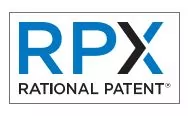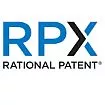Patent litigation defendants seeking to leverage the Patent Trial and Appeal Board (PTAB) face a key tradeoff: By filing an inter partes review (IPR), they forgo the ability to later assert in district court an invalidity "ground" that they "raised or reasonably could have raised" in that IPR, a statutory restriction known as IPR estoppel (as provided in 35 U.S.C. § 315(e)(2)). In May 2025, the Federal Circuit's Ingenico v. IOENGINE decision resolved a longstanding district court split over whether IPR estoppel applies for certain grounds based on system prior art, where a product is used to show that the claimed technology was in public use before a patent's priority date. The court held that grounds based on system art are not subject to estoppel, even where the prior art references used as evidence of the system's public use were cited for other prior art invalidity grounds in an IPR (anticipation or obviousness), because public use is not an available invalidity theory in an IPR. An en banc review petition challenging that decision is now before the court, as a broader debate over the proper bounds of the IPR estoppel standard plays out.
Prior to Ingenico, some district courts adopted a relatively broader, and thus more restrictive, view of IPR estoppel in this context: that system prior art should be estopped when its relevant features were all substantively disclosed in printed publications that were or reasonably could have been asserted in an IPR. Others read the estoppel provision more narrowly, and hence more permissively, as applying only to printed publications and not to the systems themselves, even if substantively identical—see, for instance, Delaware District Judge Maryellen Noreika's July 2022 decision in Chemours v. Daikin Industries, which treated physical systems as evidence and observed that if Congress had intended for "estoppel [to] appl[y] to products covered by the paper art underlying the IPR where the paper art discloses the same claim limitations as the product", it would have specifically done so.
Decisions on both sides of the split have acknowledged what they deemed the importance of "preventing defendants from 'simply swapping labels for what is otherwise a patent or printed publication invalidity ground in order to 'cloak' its prior art ground and 'skirt' estoppel'", in order to avoid disturbing the balance struck by Congress between the PTAB and district court litigation. Among those that did so was the decision below in this case, issued by Federal Circuit Judge William C. Bryson, sitting in Delaware by designation. Judge Bryson largely applied the narrower and more permissive view of estoppel as only covering references and combinations thereof that can be raised in an IPR, and not a prior art system. However, Judge Bryson held that for the defendant challenging validity to avoid estoppel, "that device [cannot] simply [be] a printed publication invalidity theory in disguise". Judge Bryson ruled that the system prior art can only be combined with prior art if "that combination is substantively different from the grounds that were raised or reasonably could have been raised by Ingenico in its petitions for IPR".
That said, the proper bounds of the estoppel statute were not squarely at issue in the resulting appeal, and as some have noted (see, e.g., Patently-O) the Federal Circuit did not request briefing of the interpretation of the term "ground".
– The Panel Decision in Ingenico
The appellate court's May 7, 2025 decision, authored by Circuit Judge Todd M. Hughes for a panel that also included Judges Timothy Dyk and Sharon Prost, adopted a view of estoppel that was closer to the narrower position adopted by some district courts, albeit with a different focus for its definition of "ground": While the district courts adopting the broader/restrictive view tended to focus on the substantive teachings of the references at issue in determining if estoppel applies, and the narrower/permissive approach focuses on the prior art itself (i.e., on whether the type of art underpinning a theory can be asserted at the PTAB), the Federal Circuit concluded that "ground" refers to the types of invalidity theory that can be heard in an IPR—specifically, the "theories of invalidity available to challenge a claim under §§ 102 and 103". The court held that ". . . IPR estoppel does not preclude a petitioner from relying on the same patents and printed publications as evidence in asserting a ground that could not be raised during the IPR, such as that the claimed invention was known or used by others, on sale, or in public use". Additionally, the court determined that prior art is evidence and not a ground itself: "[W]hile patents and printed publications are evidence that support a ground that the claimed invention was patented or described in a printed publication, they are not coextensive with a ground".
The en banc review petition filed by patent owner IOENGINE on July 7 (refiled on July 8 to correct minor issues identified by the court) raises similar concerns to those of potential "label-swapping" raised by some of the aforementioned district court rulings. IOENGINE asks the full Federal Circuit whether the panel opinion allowed a petitioner with an IPR that has reached a final written decision (as also required by the estoppel statute) "to avoid estoppel in a civil action by relabeling patents or printed publications that reasonably could have been raised as a 'ground' in the IPR". The appellant asserts that the panel "[e]schew[ed] the caution of district courts on both sides of the issue" and that it has, "[i]n effect, . . . defined the scope of IPR estoppel out of existence". IOENGINE further contends that declaratory judgment plaintiff Ingenico should have been estopped under the circumstances, alleging that its "trial presentation was simply a disguised printed publication ground. Ingenico did not substantively rely on any physical device or system at trial, but rather relied entirely on documents describing a device and a firmware upgrader, which it could have relied on at IPR".
Ingenico argues in its August 25 response brief that the Federal Circuit was correct in its interpretation of the term "ground". Additionally, among other arguments, Ingenico counters that the Ingenico decision would not enable any alleged "label-swapping" because more is needed to establish public use than just patents and printed publications: "Invalidity grounds asserting that a patented invention was known or used by others, on sale, or in public use requires additional elements and different evidence not typically found in patents and printed publications, for example sales data that companies routinely keep as confidential or testimony concerning the nature of the prior use". IOENGINE had not addressed additional evidence to that effect in its petition, Ingenico further underscored.
Notably, despite the arguable significance of this en banc petition, the US government has opted not to weigh in: Although the government, on July 15, requested an additional two weeks to decide whether to file an amicus brief, it notified the court less than two weeks later that it would not be doing so.
In the meantime, Ingenico has begun to have an impact on other litigation—including a case from Touchstream Technologies, Inc., in which defendant Alphabet (Google) has invoked the decision as part of its ongoing attempts to overturn a $339M verdict against it. On June 3, 2025, Google filed a motion for reconsideration of Western District of Texas Judge Alan D. Albright's decision that because it could have relied on disclosures from system art (here, a piece of software called the "Twonky System") as prior art in its IPRs against Touchstream, Google was estopped from raising invalidity grounds in district court based on the Twonky System. The defendant argues that Ingenico changed the applicable law such that Judge Albright should reverse his estoppel ruling and grant a new trial on invalidity.
Touchstream has argued in response that Google has mischaracterized Ingenico, further alleging that Twonky was not a product that was actually sold or used, and that the system was "cobbled" together in an attempt to "cloak [Google's] reliance upon [a document] as a product". Google has since filed a reply that pushes back on the plaintiff's reading of Ingenico, also asserting in part that the report of its invalidity expert "confirms that a jury could find that the Twonky System was a 'software suite provided to consumers'", and that the plaintiff's argument on that point goes "to the weight of the evidence and is not appropriate for a motion to exclude".
For more on that litigation, see "Judge Gilstrap Upholds Verdict for Charter in Touchstream Case as Google Fights $339M Award" (September 2025).
– Decision Could Further Blunt the Impact of Sotera Stipulations
Finally, some stakeholders have also raised the possibility that Ingenico will indirectly have an impact on PTAB practice relating to discretionary denials in the wake of recent changes implemented by the Trump administration: Earlier this year, Acting USPTO Director Coke Morgan Stewart withdrew a 2022 guidance from her predecessor, former Director Kathi Vidal, that had limited the PTAB's practice of discretionarily denying institution based on the status of parallel litigation under PTAB precedent known as the NHK-Fintiv rule. In part, that guidance established that discretionary denial would not occur where petitioners agree not to assert invalidity grounds that they raised or reasonably could have raised at the PTAB in a parallel district court case—i.e., by stipulating to a broader form of estoppel in order to minimize the risk of overlapping invalidity issues contemplated by the fourth NHK-Fintiv factor. This formalized a practice established in the PTAB's December 2020 precedential decision in Sotera Wireless v. Masimo, now known as a "Sotera stipulation".
However, an explanatory memorandum issued alongside the withdrawal of the 2022 guidance explained that now, Sotera stipulations may be "highly relevant" but will not dispositive on their own. As a result, the USPTO now faces Federal Circuit pushback from two PTAB petitioners, SAP and Motorola Solutions, that had filed IPRs prior to the withdrawal of the Vidal guidance, in which they agreed to broad Sotera stipulations in order to avoid discretionary denial as provided in the guidance—but were subsequently hit with discretionary denials under the post-withdrawal standard.
Now, some have speculated that even broader Sotera stipulations may be warranted, or even required, to avoid discretionary denials after Ingenico. For instance, Fish & Richardson has raised the possibility that as a result of that decision, combined with the withdrawal of the 2022 guidance, "a petitioner may need to put forth a more robust Sotera stipulation — such as one that foregoes all invalidity grounds — to avoid discretionary denial" (emphasis in original), underscoring that those unwilling to do so could risk "end[ing] up without the benefit of the IPR process to begin with". Additionally, Patently-O's Dennis Crouch—who has argued that Ingenico "potentially invites strategic gamesmanship by patent challengers"—has suggested that the USPTO could "require Soter[a]+ style stipulations before granting IPR review" as a possible solution. Crouch further predicts that the decision could encourage additional litigation by unsuccessful IPR petitioners seeking to "present their 'new' grounds (on old prior art) to the courts".
For more on this and other changes impacting discretionary denials under Stewart, see "Ongoing Fintiv Expansion Under Fire" (July 2025).
The content of this article is intended to provide a general guide to the subject matter. Specialist advice should be sought about your specific circumstances.


